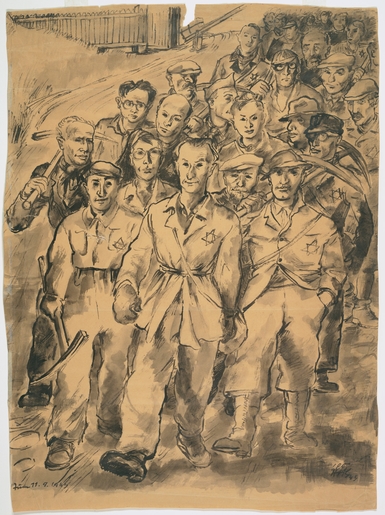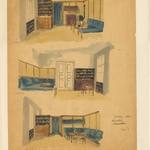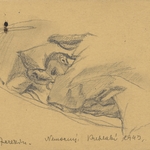VIRTUAL EXHIBITION: Last Stop Before the Last Stop
Theresienstadt, 1942–1945




THERESIENSTADT was a place of confinement for Jews from Central Europe during the Holocaust. The Germans deported 143,000 Jews to Theresienstadt between 1941 and 1945. Thirty-four thousand, almost 1 in 4, died there due to malnutrition and disease. The majority of inmates, about 87,000, were sent from Theresienstadt to “the East.” Less than 4,000 of those deported survived. Fewer than 6,000 were still alive when the Soviet Army liberated the camp on May 9, 1945.

Eighty years have passed since the first transport of Jews arrived in Theresienstadt. Still, Theresienstadt remains misunderstood. Histories that emphasize the extraordinary cultural production in Theresienstadt or the Nazi efforts to utilize it for propaganda purposes can obscure the brutal daily reality for most of those imprisoned there. Much of the evidence that has survived was produced or shaped by the perpetrators: films made for purposes of Nazi propaganda, artwork created under strict supervision, and censored letters sent from the camp.
But the truth of Theresienstadt survives in memoirs, diaries, and other artifacts.
This exhibition reveals the inmates’ experiences and shows the lesser-known, grim reality of Theresienstadt. What can we learn from the history of Theresienstadt for today and the future?
For the Nazis, Theresienstadt served several purposes. It was a transit point for Jews to be removed from “Greater Germany.” It was portrayed as an “old-age home” for the elderly, who could not be expected to work but who made up a disproportionate number of Jews remaining in Germany and Austria following the mass emigration of younger generations. It also became a destination for groups deemed exceptional, such as World War I veterans and prominent Jewish community members. Membership in one of these groups might bring certain privileges, but the conditions were generally cruel for all. The Nazis also made efforts to use Theresienstadt for propaganda purposes to deceive the world about the fate of European Jews. Finally, in rare cases, Theresienstadt held Jews meant for exchange to secure the freedom of German civilian internees abroad or needed war materials.

Ghetto or Camp? Terezín or Theresienstadt?
In this exhibition, the terms “ghetto” and “camp”, Terezín (the Czech name) and Theresienstadt (the German name) are used interchangeably. The complex served different functions during its existence and did not have typical features of concentration camps.
About the image: Theresienstadt was a fortress town 43 miles from Prague. Built in the 18th century, it served as a military base and a prison. After the German invasion of Czechoslovakia in 1939, the Small Fortress, already in use as a prison since the 19th century, was taken over by the Gestapo. During the Wannsee Conference, it was decided that Theresienstadt would become an Altersghetto for Jews over 65 from the Reich.












